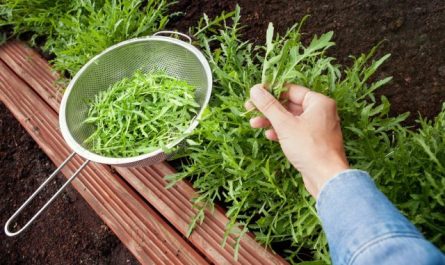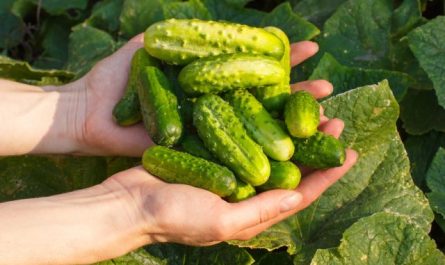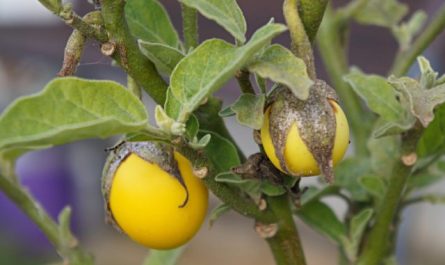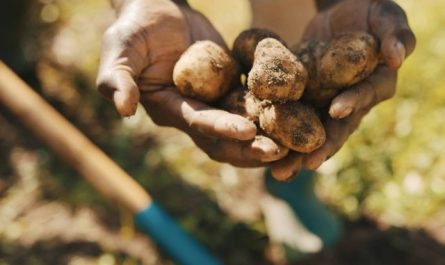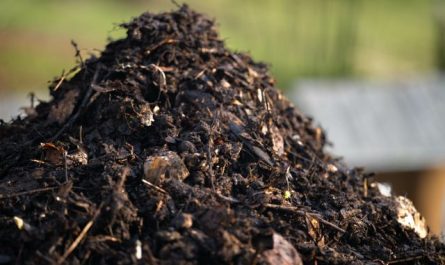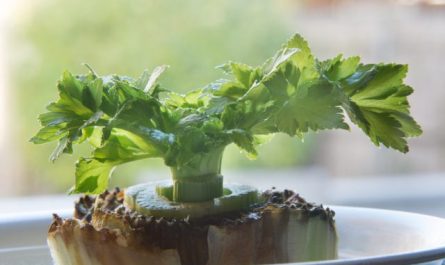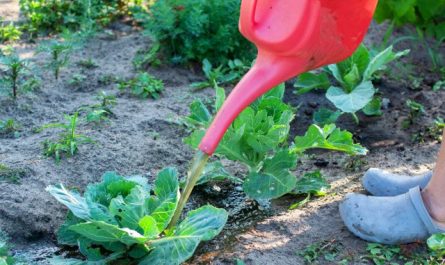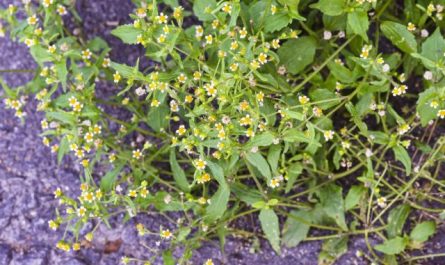Since time immemorial, horseradish has been an honored guest on the Russian table. It has entered into folk tales, sayings, and proverbs:
Horseradish radish is not sweeter.
A spruce forest, a birch forest, aren’t they firewood? – Horseradish and cabbage, aren’t they food?
Indeed, horseradish is a noble vegetable. Its rhizomes contain essential oil, physiologically active substances with antibacterial properties. The specific smell and piquant taste of horseradish are due to mustard glycoside, which has a strong bactericidal effect. Horseradish contains salts of sodium, potassium, iron, sulfur, phosphorus, magnesium, copper, manganese, vitamins PP, B2 B115. Its leaves are rich in carotene (200 mg%), vitamin C (up to mg%).
Grated horseradish is an excellent seasoning for meat, jellied meat, and poultry. Horseradish leaves used as a spice for pickling cucumbers add strength and crunch to the product, enrich it with vitamins, and eliminate pathogenic flora and mold. In addition, horseradish stimulates appetite, improves bowel function, and stimulates the formation of vitamin B in the body. However, it is recommended to consume it in moderate doses, as it can irritate the mucous membrane of the stomach and intestines.

© Christian Fischer
Is there horseradish in your garden? No? Of course, many amateurs, like you, do not grow horseradish, fearing that it will drown out other vegetables. It is more convenient to use leaves picked by the roadside or in vacant lots for pickling cucumbers and mushrooms. But in vain, you can only get environmentally friendly products on your own plot. Moreover, now there are selective varieties of horseradish Atlant and Tolpu-khovsky, distinguished by powerful development and juiciness of rhizomes. I have been growing horseradish for many years, I prepare thick rhizomes for the winter, and shiny, large clean leaves are used for pickles.
To curb the activity of horseradish, you need to know its biology. Horseradish grows well on loamy or sandy loam soil, loves the light, but tolerates shaded areas. The favorable temperature for its growth and development is 17-20 °C, higher temperatures suppress the plant. Horseradish can grow in one place for 5-10 years. In the middle zone, it reproduces by root suckers and root cuttings. In some years with high solar activity, its plants older than 2-3 years can form flowering shoots with small white flowers that have the aroma of stocks. By the end of the season, a few pods even form on such plants, but the seeds do not ripen in our zone, even if they have formed. If you sow these seeds, they either will not sprout or will have a very low germination rate. The seeds ripen only in the south of our country. It is better to remove the resulting flower stalks so that they do not deplete the rhizome, which also becomes coarser when they appear.

© graibeard
The powerful rhizome of horseradish is a horizontal underground stem, the surface of which is covered with wart-like growths, in which numerous dormant buds are concentrated. The rhizome stores reserve nutrients created during photosynthesis in the leaves. Horseradish accumulates the greatest amount of nutrients by October, when we usually dig up the roots.
When winter comes, the above-ground parts of the plants that remain to overwinter die off, and the underground parts go into a dormant state. Of course, the plant uses up its reserve substances in winter, but sparingly. Horseradish tolerates frosts down to -45 °C. At the beginning of the next growing season, the buds on the rhizomes awaken, and new leaves and stems begin to form.
How can one explain the amazing vitality of horseradish? Its lateral roots go so deep into the soil that it is difficult to dig them out completely. It is not for nothing that horseradish is often called a weed. One autumn, when pruning horseradish, my husband and I put the plant remains in the compost heap, not noticing that a small piece of the rhizome got there. A full-fledged plant grew from this piece and quickly mastered the entire heap. By autumn, it had formed such powerful and long roots that we were not able to dig them out completely. In the spring, the remains of the roots reached the surface of fresh compost, leaves appeared. In the summer, we cut the leaves several times, in the autumn I picked out even the smallest roots, but in the third year, out of nowhere, horseradish sprouts appeared on the compost heap.

© avlxyz
Chance helped me get rid of horseradish. One of the seasons turned out to be very dry, and horseradish loves moisture. The growth of leaves was weak, and the summer cutting exhausted the plants. Looking for roots, I had to sort through all the compost with my hands. And only after that did the spring invasion of the “conqueror” on our compost stop.
Now I grow horseradish only in a limited amount of soil. At first I adapted old buckets and thin bottomless pots for this, burying them 2/ of the way into the ground. However, such containers turned out to be too small for such a powerful plant. Very conveniently, an old bathtub had leaked, we first put compost in it, then poured garden soil on top, into which we planted horseradish rhizomes. The rhizomes grown in the bathtub turned out to be very juicy and aromatic, smooth and thick. The shadow from the powerful horseradish leaves did not interfere with other vegetable plants, since the bathtub is located near a mesh fence in the lowest part of the plot.
I dig up the rhizomes with a garden pitchfork 1-2 years after planting, when the leaves start to turn yellow, shake the roots from the soil, cut off the leaves. Large specimens are used for food, small ones – for planting.
Since then I have been growing horseradish in a bathtub. In the fall I plant seven lateral sections of the rhizome 15 cm long and 0,5-1 cm thick and cover them with a 4-5 cm layer of soil. Before planting, I wipe the cuttings with a mitten, removing the middle buds and leaving them only on the lower and upper parts of the root cutting 3-4 cm long. Cuttings from different parts of the rhizome are biologically heterogeneous. The best quality products are those taken from the lower part of the rhizomes.
It is difficult to notice the buds on the cuttings, so for the correct orientation (top-bottom) when planting, I cut the top of the cutting at a right angle, and the bottom at an acute angle. I stick the cuttings into the soil under a peg at an angle of 45°.
You can plant horseradish cuttings in the spring, but then you need to first grow them in sawdust.

© Anna reg
Horseradish responds well to watering, In a dry year I water several times as needed at the rate of 10-20 liters of water per 1 m2. With excess moisture the roots rot, with a lack of moisture they become woody. From early spring I feed horseradish with urea or ammonium nitrate (10-15 g per 1 m2), and if growth is weak after 2-3 weeks again with mullein diluted with water in a ratio of 1:10.
Horseradish is more resistant to diseases, than other plants of the cabbage family, but from pests it is sometimes damaged cruciferous flea beetle, cabbage moth, fire moth, turnip white butterfly, so for prevention I dust the plants with tobacco dust and ash.
To prevent the multi-headed root from growing, In the spring, I remove excess rosettes of leaves with a sharp knife, leaving no more than two on one plant. In addition, at the beginning of summer, I rake away the soil and remove all the upper lateral buds, leaving only one, and again hill up the plants. The result is an even, smooth root. During the summer, I regularly carry out shallow loosening as the soil compacts. That’s all the wisdom. Finally, I give you some recipes.

© graibeard
Recipes from Grandma
In Russian classical cuisine, horseradish was always prepared directly for the table and they tried not to leave it for more than 1-2 days, since it was believed that horseradish should definitely be evil, “hit you in the nose well”, and if left for more than 2 days after preparation, it lost its strength. In addition, in Russian, horseradish was always prepared without vinegar (in Polish), which “kills” the strength of horseradish and gives it its flavor and spiciness, not typical of national Russian dishes.
Horseradish prepared in Russian style had an extremely soft, delicate taste along with an extremely strong, tear-inducing, caustic “shibanie”, which was the main charm of this Russian seasoning. There was also a secret to its use: horseradish had to be consumed only after biting off and only slightly chewing (but not swallowing!) the next piece of fish or meat. Those who did not know this secret sometimes jumped up in place, bursting into tears under the laughter of their fellow diners.
Horseradish in the “Russian version” retained its bactericidal properties and served not only to improve the taste of dishes, but also to prevent the development of scurvy, flu, infectious diseases of the upper respiratory tract, and to prevent intestinal diseases.

© H. Zell
Dried horseradish
Grandma dug up horseradish, peeled it, cut it into matchbox-sized pieces. She chopped each piece into matchstick-thick slices. She threaded a needle and strung the pieces on the thread, hanging them on the kitchen wall to dry. In winter, when guests came, she would take a few horseradish stalks, pound them in a mortar and put them in a glass so that there was half a glass of dry horseradish, pour in sweetened water, add a little vinegar and salt, and cover with a piece of black bread. After a while, she would take the bread off, and a sharp smell would hit her nose from the glass – the horseradish had “come to life”. Now it could be used as a seasoning for meat and jellied meat.
Horseradish and Beetroot Seasoning
Peel 700 g of large horseradish roots, soak in cold water for a day, mince, add 1,5 cups of cold boiled water, mix, squeeze the juice into another container. Grate one medium-sized beetroot, soak in water for a day, squeeze out the juice, mix with horseradish juice, adding
2 teaspoons of granulated sugar and salt, 400 ml of apple cider vinegar. Pour the resulting dressing into the grated horseradish pulp, mix well and put into jars. Close with lids, store in a cool place.

© Burger Baroness


